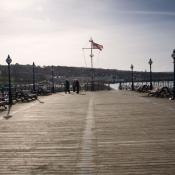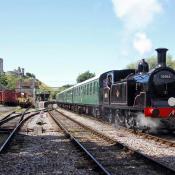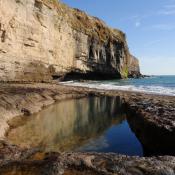A 280 acre countryside paradise, consisting of sea-cliffs, coastal limestone downland, haymeadows, hedgerows and woodland. 33 species of butterfly, over 250 species of bird, 500 wildflowers, 500 moths and thousands of invertebrates.
Durlston Country Park is a two hundred and eighty acre country park and nature reserve situated a mile from Swanage. The park is mostly open access and has been owned by Dorset County Council since 1970.
The parks sea cliffs form part of the Jurassic Coast. Most of Durlston Country park consists of calcareous grassland created around a thousand years ago when the oak forest was cleared. Other habitats include ancient meadows, hedgerows, woodland and dry stone walls. Together they support thirty three species of breeding butterfly, two hundred and fifty species of bird, five hundred species of wild flower, five hundred species of moth and thousands of invertebrates.
In the grounds of the park is Durlston Castle, built in 1886 by George Burt, who also commissioned a forty tonne globe that lies at the bottom of a long flight of steps a little to the south. The turreted Durlston Castle, which sits on top of Durlston Head, is built entirely from local stone. The great globe, which is ten feet in diameter, was built in Greenwich and brought to the park in sections. Durlston Castle recently received lottery funding to be converted into a world-class information centre for visitors to the Jurassic Coast. It is expected to open in summer 2011.
Walking trails criss-cross the park. There is an award-winning cafe and an excellent visitor's centre, where a wealth of information on native wildlife is enhanced by live footage from a camera secreted under the edge of the cliffs. Most of Durlston Country park is a designated SSSI, a Special Area of Conservation and a Site of Nature Conservation Importance. It sits within the Purbeck Area of Outstanding Natural Beauty and became a national nature reserve in 2008.
There is a car park and toilets on site.




